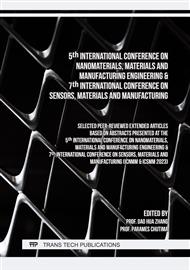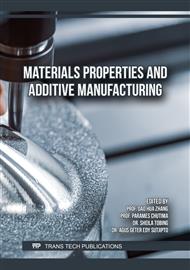p.21
p.29
p.41
p.53
p.63
p.71
p.81
p.87
p.95
Studying Effects of Heat Treatment on Friction Stir Welding of Al 7075
Abstract:
This study presents a research paper on the influence of heat treatment on FSW in Al 7075 materials. A comprehensive investigation was used to examine the impact of crucial weld parameters on the weld quality, including strength, flexibility, corrosion resistance, and weld structure. Additionally, the influence of temperature and tempering time on the weld quality was thoroughly examined. A series of comprehensive experiments were carried out on a 2.5 m thick aluminum 7075 plate that was welded using the Friction Stir Welding (FSW) technique. The primary objective of these experiments was to methodically examine the impact of heat treatment on the welded plate's mechanical and microstructural characteristics. The samples underwent examination both before and during heat treatment. The macroscopic and microstructural characteristics were analyzed utilizing optical microscope, tensile testing, and microhardness assessment. The impact of heat treatment is noteworthy as it substantially reduces the weld hardness while enhancing its elasticity.
Info:
Periodical:
Pages:
63-69
Citation:
Online since:
February 2024
Authors:
Keywords:
Price:
Сopyright:
© 2024 Trans Tech Publications Ltd. All Rights Reserved
Share:
Citation:



